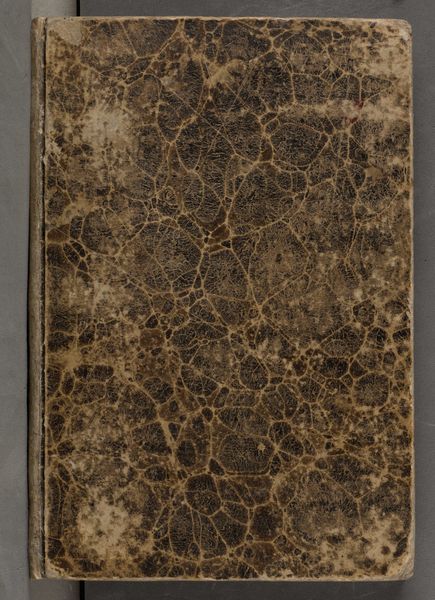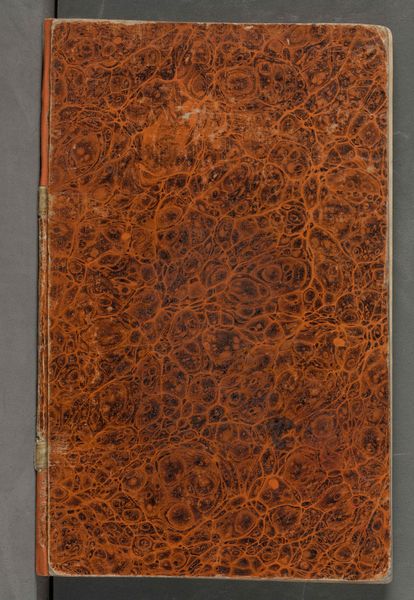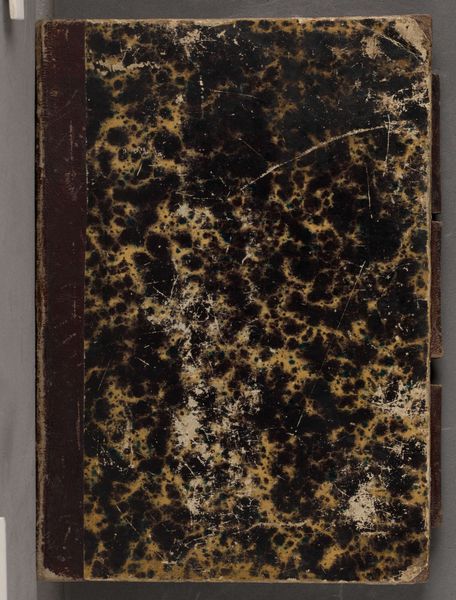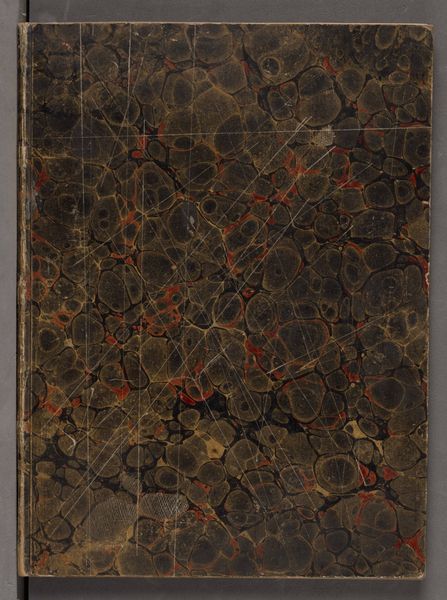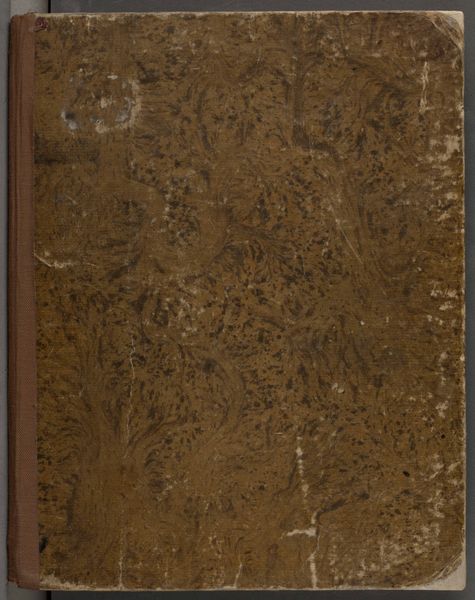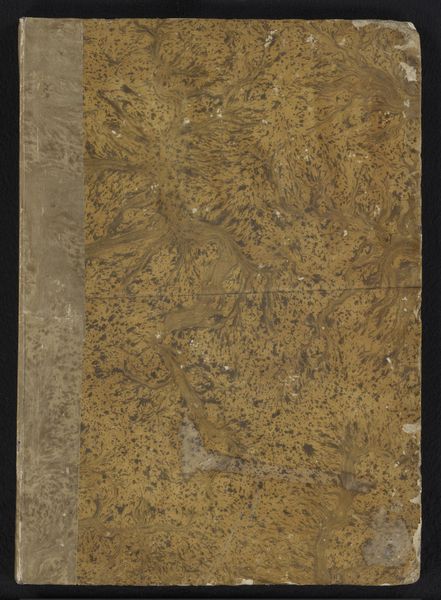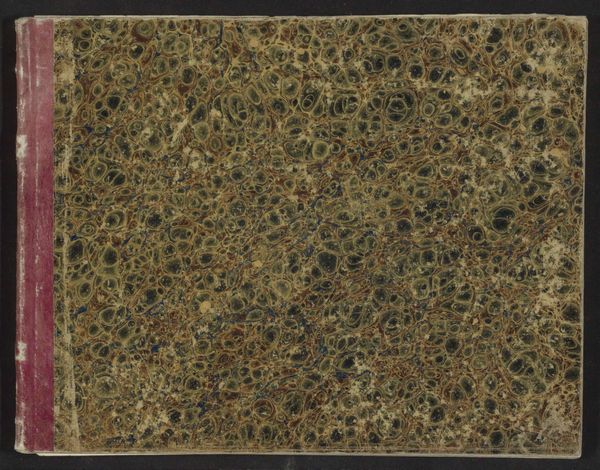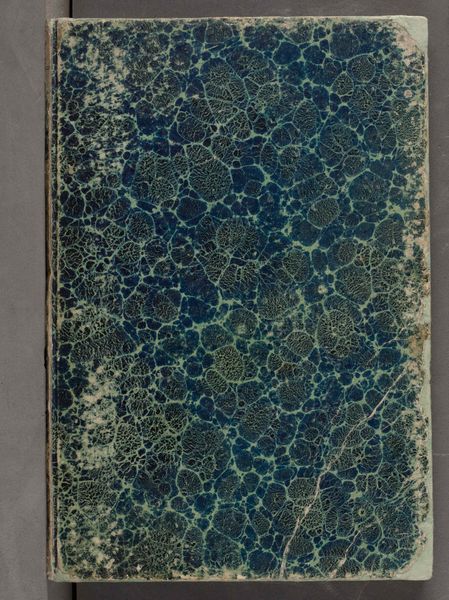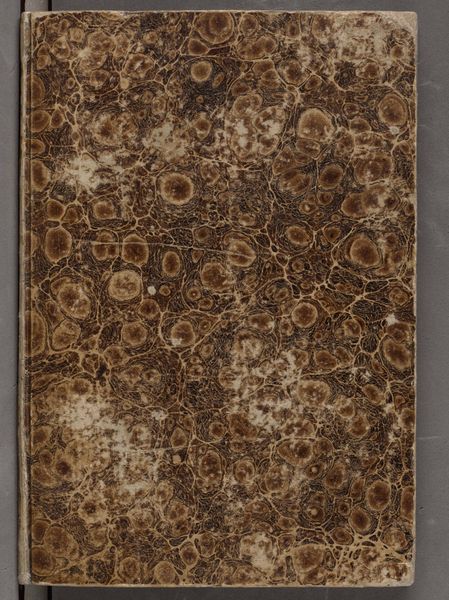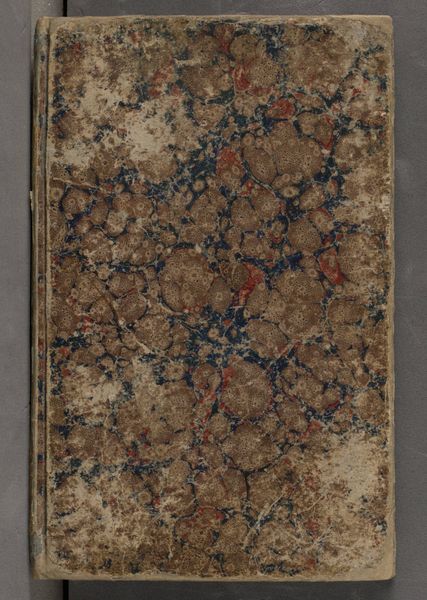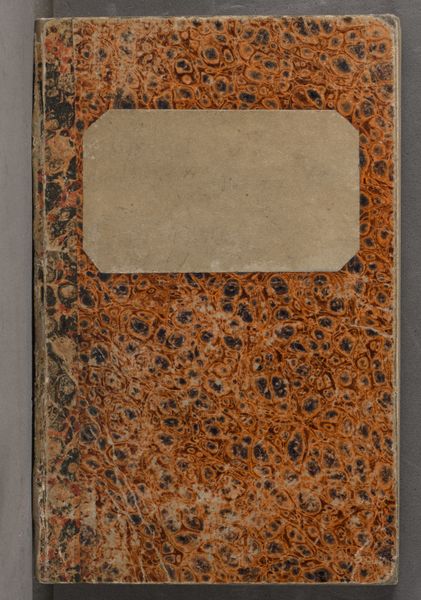
drawing, paper, ink
#
drawing
#
16_19th-century
#
paper
#
ink
#
german
Copyright: Public Domain
Editor: This is "Skizzenbuch," a sketchbook from 1840 by Ludwig Metz, created with ink on paper. The cover has this amazing marbled pattern, a little like dried mud or the veins of a leaf. What symbols or cultural meanings might you see here? Curator: An intriguing start. Yes, the marbled effect immediately grabs attention. The pattern isn't random; it mimics natural structures. In this era, the appeal to natural patterns reflected a desire to find deeper meaning in the observable world. But think more deeply about the symbolic resonance of a sketchbook. What do YOU see there? Editor: I guess the sketchbook itself implies a personal journey, like capturing fleeting thoughts or moments? Curator: Precisely. A sketchbook, especially from the 19th century, isn't merely a repository for drawings; it is a landscape of the artist's mind. The images captured hold memory and aspirations. It speaks volumes about who Metz was, what captivated him. It hints at untold narratives and is pregnant with the artist’s intent and expression. What could this imply about societal influences from the mid-1800s? Editor: Maybe a shift towards valuing individual expression and exploration? This feels less about grand pronouncements and more about intimate observations. Curator: A key shift, indeed! You begin to decipher the language within. Now, imagine holding it. This singular object once belonged to Metz, bearing the marks of time and travel, all symbols interwoven. Thank you for the wonderful observations. Editor: Thank you, it's really fascinating to consider a sketchbook as more than just a collection of drawings.
Comments
stadelmuseum about 2 years ago
⋮
In June 1840, Ludwig Metz travelled through Hessia, first to Frankenberg, then, after a short detour to Haina, on to Sachsenberg, Waldeck Castle, Fritzlar and Friedberg. He captured the Church of Our Lady in Frankenberg and the collegiate church of St. Peter zu Fritzlar in a series of precise drawings and detailed images, which document his great interest in Gothic architecture.This fascination with the Middle Ages also defines the further studies in this sketchbook: the views of the cathedral and Kalsmunt Castle in Wetzlar, drawn in August 1840, or Hohenstein Castle near Frankfurt ‒ although some of them are also realised in almost identical form in a sketchbook by the older Friedrich Metz from the same year (see Inv. SG 2756, Städel Museum). According to the brothers’ dates, the depictions in question were made at slightly different times, so that a joint drawing on the spot can be ruled out. The similarity of the drawings with regard to both the chosen picture details and the perspectives is so striking, however, that they allow no other conclusion than that the young draughtsmen Friedrich and Ludwig Metz studied after the same models or even exchanged their sketchbooks occasionally in order to copy motifs of interest to them from one another.The undated studies of Gothic buildings or architectural details from Frankfurt, Erfurt, Naumburg and Magdeburg, scattered between Hessian motifs, as well as the drawings of the churches in Stewkley, Buckinghamshire, of St. John in Wiltshire and of the collegiate church of St. Peter and Alexander in Aschaffenburg were probably based on other drawings.For a full sketchbook description, please see “Research”.
Join the conversation
Join millions of artists and users on Artera today and experience the ultimate creative platform.
